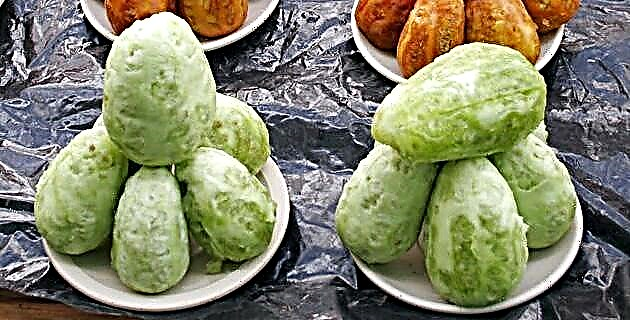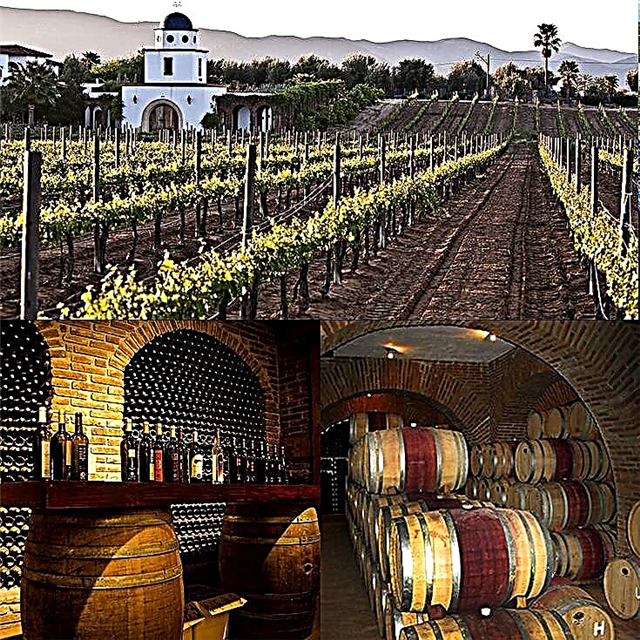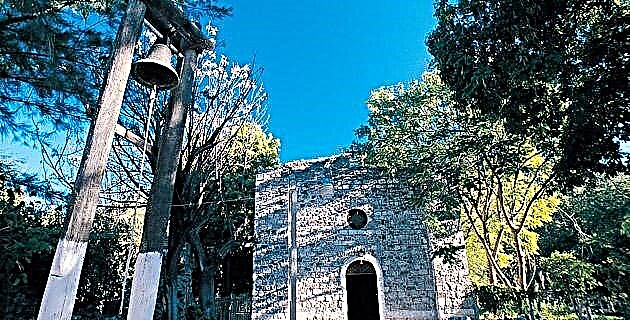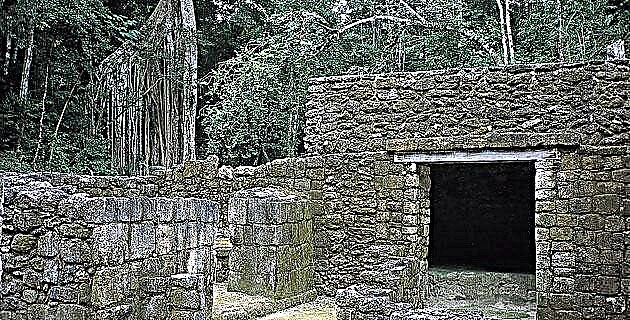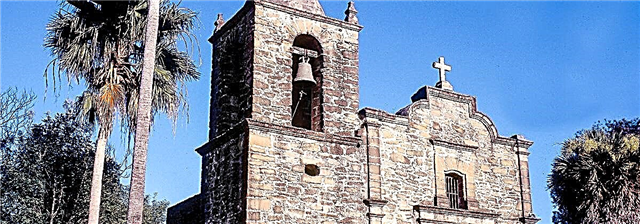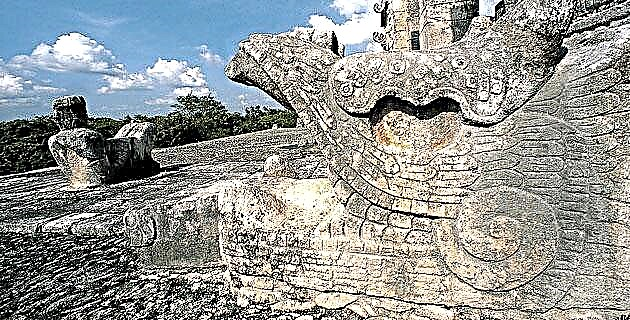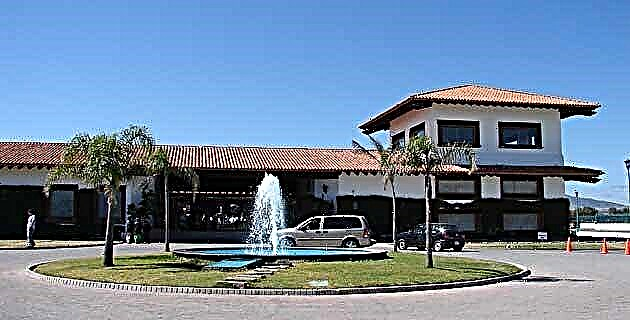
A few kilometers from Querétaro, is the municipality of Ezequiel Montes, a very unique place where, with patience, a now very Mexican tradition is cultivated: wine.
In this changing and capricious land there is what we would call an "oasis" due to the diverse soil and climate conditions it presents, from desert to forested. The aforementioned space, with heritage originating from Spain, and in particular from a Catalan region, points to the Freixenet Cavas like a good port of arrival for European wine culture. This area was selected among several, for being a generous land, because all the optimal geoclimatic characteristics converge for the cultivation of the vine. The beautiful Doña Dolores farm serves as a great source of work, attracting the workforce of many people who live in neighboring municipalities and towns such as Ezequiel Montes himself, San Juan del Río, Cadereyta, Querétaro, among others.
The farm It is a space where tile, wood and quarry merge in a balanced way, making us feel that country atmosphere proposed by the large estates with their gardens adorned with fruit trees and the mountain range that comes out everywhere truncating the horizon, without omitting that from there, we can observe that natural skyscraper that is the Penalty of Bernal.
HOW A GOOD WINE IS BORN
The Freixenet plant It is located at 2,000 meters above sea level, which causes the grapes to ripen in extreme and peculiar conditions. The temperature is 25 ° C during the day and 0 ° C at night; talking about the cellars are built 25 meters deep, in order to maintain a constant and necessary climate for the preparation of the broths.
Said cavas, similar to certain dungeons that surrounded the great medieval castles, are constituted in what appear to be elongated underground labyrinths, vaulted and under a dim light (for the perfect maturation of the wine at rest), where the peculiar aroma that emerges from the barrels is quickly noticed.
THE HISTORY OF A VERY MEXICAN SPANISH
The name on the Sala Vivé bottles was in homage to that great lady of wine, Doña Dolores Sala I Vivé, main figure in the development of the house in Spain. The name Viña Doña Dolores appears on the still wine bottles and their surnames on the Sala Vivé sparkling wine.
Francesc Sala I Ferrer founded the Sala house, a wine producer in Sant Sadurní de Anoia, Catalonia, in 1861; his son Joan Sala I Tubella continued with the familiar tradition and after the wedding of his daughter, Dolores Sala I Vivé with Pere Ferrer I Bosch, they laid the foundations for the production of cava, natural sparkling wine, to be born in 1914. Made from the method used for champagne from France. Mr. Pere (Pedro) Ferrer I Bosch, being heir to "La Freixeneda", a farm located in the upper Penedés since the 13th century, gives rise to the commercial name, which little by little, on cava labels, appears with the Freixenet Casa Sala brand.
By 1935, it already had a commercial presence in London and had a branch in New Jersey (United States), from the 70s, after its consolidation in the Hispanic market, Freixenet begins a continuous process of expansion. They acquire the Henri Abelé cellars in the Champagne region, in Reims, France, which date back to 1757, these being the third oldest in this wonderful region; In addition to New Jersey, it has the Freixenet establishment, Sonoma Caves, in California and later in Querétaro.
Talking about the plant located in BajíoThe “Tabla del Coche” land, Ezequiel Montes municipality, was first acquired in 1978, taking advantage of both the climatic situation and its geographical location. In 1982 the planting of the vineyards began and by 1984 the first bottling process of the sparkling wines of Sala Vivé began, using local grapes, but not yet their own, but it was not until 1988 that they were would cover 100% of the home crop.
The facilities have an area of 10,706 m2 of land and 45,514 m2 for vineyards. Different kinds of wine are made from the grapes that were planted: Pinot Noire, Sauvignon Blanc, Chenin, Sant Emilion and Macabeo, the first four French and the last Catalan, in addition to Cabernet Sauvignon and Malbec for their red wines.
Your brand Nevada Letter is the absolute leader in the Spanish and German market, and Black Cord It is in the United States. Products such as Brut Baroque, Brut Nature Y Royal Reserve. For all this, we believe without a doubt that Ezequiel Montes, and in particular Cavas Freixenet, it is an ideal space that exudes flavor of ours…. where beauty, adventure, flavor and culture also converge. Feast where we are all invited.
The environment, light and transparent, makes us rediscover the possibility of inhalation and exhalation as a true natural dynamic. It is finally, in its profound totality, an atmosphere that emanates various meanings of silent eloquence.
HOW TO MAKE A SPARKLING WINE
This process begins with the stabilized wine, it is placed in the draft tank, where sugar and some other ingredients are added, such as clarifiers, yeasts in full activity, among others. The bottles prepared to withstand the pressure of the sparkling wine are filled and these are closed, first by the shutter, which is what helps to collect the sediments or dead yeasts; and second, by the cork-can that will help maintain pressure in each of the bottles. A second fermentation will take place inside each bottle and at the depth of the cellars so that they obtain the optimum temperature.
For example, bottles such as Petillant remain in cellars for at least 9 months; in the case of the Gran Reserva Brut Nature de Sala Vivé, 30 months. Once this time has elapsed, the bottles are transferred to the desks (concrete devices with a capacity for 60 bottles), where the bottles will be “rinsed”, giving them 1/6 of a turn, counterclockwise, and at the end of the complete turn, they will rise a little to go from horizontal to vertical position, and so on until they are completely vertical (also called "tip"), gathering a total of 24 movements.
Subsequently, it goes on to the "disgorgement" operation, where the neck of the bottle is frozen in order to extract the "mothers" (must feces) or lees from the sparkling wine, and thus be able to add the expedition liquor to the product. It is then covered with natural cork and the muzzle, labeled, fitted, being ready for sale and tasting. On the other hand, the color of the bottles is an important factor as protection of the wine against light, enemy number one that affects its qualities.
PROCESSING YOUR WINES
The vineyard area is rigorously guarded, cared for and free from pests, so that the fruit always maintains the required quality, flavor and ideal fermentation. At the beginning of fermentation, supports based on bammonium phosphates and hydrated dry yeasts are used. Temperatures are controlled by automatic devices, for whites and rosés, 17 ° C; for reds, 27 ° C.
Controlled fermentations last approximately 15-20 days, depending on the year. In the case of red wines, the must (grape juice before fermenting) and the grape grain without stems are given together to obtain the maximum color through said maceration (operation of remontage of the must in the fermentation tank). Wines destined for rosés are separated between 15 and 36 hours from the start of fermentation to continue their course just like white wines.
PARTYING…
In this area there are a number of celebrations that you can attend, such as the Harvest Festival (the only grape harvest in the year), where there is wine tasting, the treading of the grapes with your feet. There is also the Paella Festival and the now traditional Christmas Concert, held inside their cellars.
IF YOU GO…
Freixenet is located on the San Juan del Río-Cadereyta highway, Km. 40.5, municipality of Ezequiel Montes, Querétaro.

